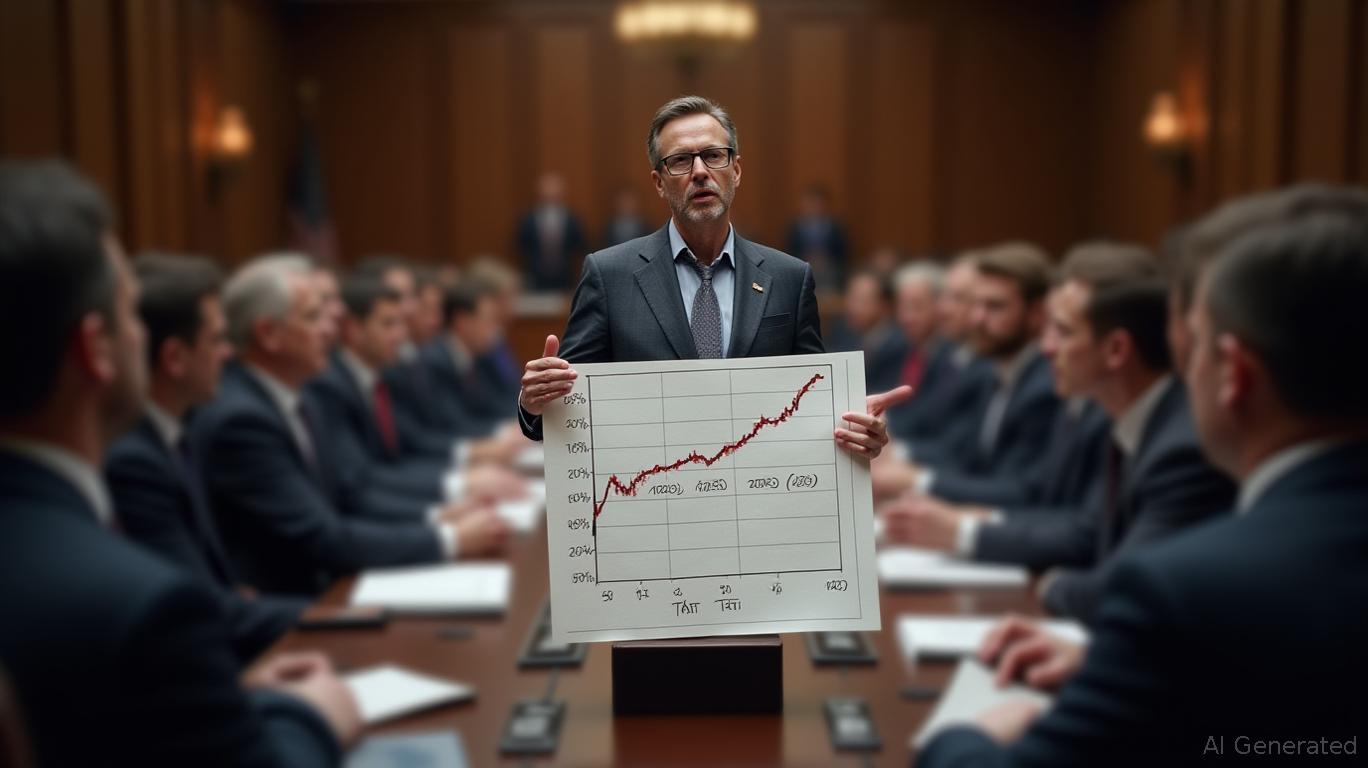Decoding the Fed's Dot Plot: Navigating Rate Cycle Peaking and Market Volatility for Tactical Gains
The Federal Reserve's Dot Plot, a critical tool for deciphering monetary policy expectations, has emerged as a linchpin for investors seeking to parse the end of the current rate-hiking cycle and its implications for markets. As of June 2025, the Fed's projections suggest a terminal federal funds rate range of 3.0%–3.5% by 2027—a downward revision from earlier forecasts—while signaling a prolonged pause in hikes. This analysis explores how these signals create tactical opportunities in fixed income and equity sectors, while mitigating risks tied to lingering volatility.
The Fed's Current Outlook: A “Higher-For-Longer” Stance with Lower Long-Term Rates
The June 2025 Summary of Economic Projections (SEP) reveals a nuanced shift in Fed thinking. While the central rate remains anchored at 4.25%–4.5%—its highest since 2006—the median
now anticipates only one 25-basis-point cut by year-end, with rates falling to 3.4% in 2026 and 3.1% by 2027. This reflects a “higher-for-longer” but ultimately lower terminal rate compared to earlier cycles.The Dot Plot's downward trajectory for long-term rates () underscores a Fed prioritizing inflation control over aggressive tightening. Key drivers include:
- Economic Softening: GDP growth revised downward to 1.7% in 2025, with unemployment rising to 4.4%, signaling a cooling labor market.
- Inflation Moderation: Core PCE inflation expected to drop to 2.0% by 2027, though near-term risks linger due to geopolitical and trade policy uncertainties.
Implications for Fixed Income: Capturing Yield in a Flattening Curve
The Fed's path creates a sweet spot for bond investors, particularly in intermediate-term Treasuries and high-yield corporates, as the yield curve flattens.
1. U.S. Treasuries:
- Opportunity: Short- to intermediate-term maturities (2–5 years) offer a balance between yield and reduced duration risk.
- Data Insight: The yield on 5-year Treasuries has outperformed 10-year notes by 25 basis points since early 2025 ().
- Risk: Avoid long-dated bonds, as the Fed's prolonged pause may delay the eventual downward rate path.
2. High-Yield Bonds:
- Case for Bargains: Spreads over Treasuries have widened to 3.5%, reflecting investor caution. However, defaults remain low ().
- Focus on Quality: Prioritize issuers in stable sectors like healthcare or consumer staples, avoiding cyclical industries tied to economic slowdowns.
Equity Sector Opportunities: Rotating to Rate-Resistant Plays
The Fed's muted hawkishness opens doors for sector rotation, favoring businesses insulated from rate pressures or positioned to benefit from a stabilizing economy.
1. Financials:
- Winners: Banks and insurers thrive in higher rate environments, though the flattening curve may compress net interest margins.
- Pick: Regional banks with strong loan growth (e.g., Wells Fargo (WFC), Bank of America (BAC)) and insurers with liability-driven investing models (e.g., Travelers (TRV)).
2. Consumer Staples:
- Defensive Play: Companies like Procter & Gamble (PG) and Coca-Cola (KO) offer stable cash flows and dividend yields (~2.5–3.0%), attractive as volatility persists.
3. Tech and Semiconductors:
- Cautious Optimism: While tech remains rate-sensitive, sectors like AI-driven software (e.g., Microsoft (MSFT)) and semiconductors (e.g., NVIDIA (NVDA)) could rebound if earnings beat expectations.
- Risk: Avoid pure-play cyclicals like industrials or autos, which face headwinds from slowing GDP.
Managing Volatility: Hedging and Diversification Strategies
The Fed's uncertainty—highlighted by its 70% confidence interval for GDP growth (0.2–3.2%)—demands hedging. Consider:
- Options: Buy puts on sector ETFs like SPDR S&P Bank (KBE) or iShares U.S. Consumer Staples (IYK) to protect against downside.
- Gold: The SPDR Gold Shares (GLD) could act as a volatility hedge, given its inverse correlation to equities during policy uncertainty.
Conclusion: Position for the Rate Cycle's Twilight
The Fed's Dot Plot signals that the peak of the rate cycle has likely passed, with the terminal rate now lower than earlier projected. Investors should:
1. Rotate into intermediate Treasuries and high-quality corporates for yield.
2. Tilt equities toward defensive sectors (financials, staples) and secular growth themes (AI, healthcare).
3. Hedge downside risk with options or gold.
The 2025–2027 period will reward patience and precision—monitoring inflation data and Fed communication will be key to navigating the final leg of this cycle.

Investment decisions should align with individual risk tolerance. Past performance does not guarantee future results.

Comments
No comments yet